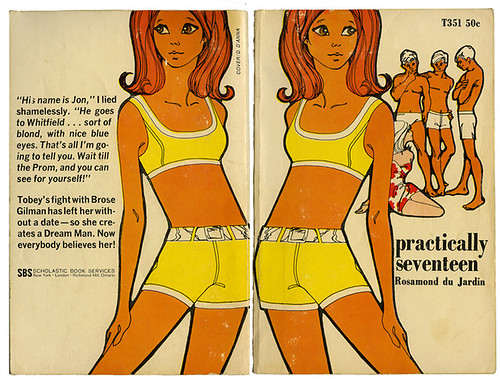Part of me says, "Oh, there's no reason to explain who Helen Keller is. Everyone knows her story." Then I start thinking about how poorly educated we are in this country and I know there are a lot of people who haven't a clue who this great woman was. All I'll provide are snippets in hopes that others will take the time to look into her life, learn from it. Find out what a true hero is. Not a phony sports figure, two bit rock star, or movie star. Someone who through terrific odds left the world a better place.
Helen Adams Keller (June 27, 1880 – June 1, 1968) was an American author, political activist, and lecturer. She was the first deafblind person to earn a Bachelor of Arts degree. The story of how Keller's teacher, Anne Sullivan, broke through the isolation imposed by a near complete lack of language, allowing the girl to blossom as she learned to communicate, has become widely known through the dramatic depictions of the play and film The Miracle Worker.
A prolific author, Keller was well-traveled, and was outspoken in her opposition to war. A member of the Socialist Party of America and the Wobblies, she campaigned for women's suffrage, workers' rights, and socialism, as well as many other leftist causes.
Early childhood and illness
Helen Adams Keller was born on June 27, 1880, in Tuscumbia, Alabama. Her family lived on a homestead, Ivy Green, that Helen's grandfather had built decades earlier. Helen's father, Arthur H. Keller, spent many years as an editor for the Tuscumbia North Alabamian and had served as a captain for the Confederate Army. Helen's paternal grandmother was the second cousin of Robert E. Lee. Helen's mother, Kate Adams, was the daughter of Charles Adams. Though originally from Massachusetts, Charles Adams also fought for the Confederate Army during the American Civil War, earning the rank of brigadier-general.
Helen's father's lineage can be traced to Casper Keller, a native of Switzerland. Coincidentally, one of Helen's Swiss ancestors was the first teacher for the deaf in Zurich. Helen reflects upon this coincidence in her first autobiography, stating "that there is no king who has not had a slave among his ancestors, and no slave who has not had a king among his."
Helen Keller was not born blind and deaf; it was not until she was 19 months old that she contracted an illness described by doctors as "an acute congestion of the stomach and the brain", which might have been scarlet fever or meningitis. The illness did not last for a particularly long time, but it left her deaf and blind. At that time, she was able to communicate somewhat with Martha Washington, the six-year-old daughter of the family cook, who understood her signs; by the age of seven, she had over 60 home signs to communicate with her family.
In 1886, her mother, inspired by an account in Charles Dickens' American Notes of the successful education of another deaf and blind child, Laura Bridgman, dispatched young Helen, accompanied by her father, to seek out Dr. J. Julian Chisolm, an eye, ear, nose, and throat specialist in Baltimore, for advice. He subsequently put them in touch with Alexander Graham Bell, who was working with deaf children at the time. Bell advised the couple to contact the Perkins Institute for the Blind, the school where Bridgman had been educated, which was then located in South Boston. Michael Anaganos, the school's director, asked former student Anne Sullivan, herself visually impaired and only 20 years old, to become Keller's instructor. It was the beginning of a 49-year-long relationship, Sullivan evolving into governess and then eventual companion.
Anne Sullivan arrived at Keller's house in March 1887, and immediately began to teach Helen to communicate by spelling words into her hand, beginning with "d-o-l-l" for the doll that she had brought Keller as a present. Keller was frustrated, at first, because she did not understand that every object had a word uniquely identifying it. In fact, when Sullivan was trying to teach Keller the word for "mug", Keller became so frustrated she broke the doll. Keller's big breakthrough in communication came the next month, when she realized that the motions her teacher was making on the palm of her hand, while running cool water over her other hand, symbolized the idea of "water"; she then nearly exhausted Sullivan demanding the names of all the other familiar objects in her world.
Due to a protruding left eye, Keller was usually photographed in profile. Both her eyes were replaced in adulthood with glass replicas for "medical and cosmetic reasons". (SOURCE: Wikipedia)
The reason for this post is because of this old post card I found in one of my many post card boxes. I remember buying it at an estate sale. The only reason I bought it was because of the link to Keller.




What I find funny is that here we have a card honoring a great communicator and the person who scrawled their message on this card was definitely missing the point. I simply can't read their writing.
My first introduction to Helen Keller was this little Scholastic Book originally published in 1958. This one is a fifth edition published in 1962. Oh yes, I did so love the Scholastic Book Club. But I've done a post about that in the past.
Apparently the house shown in the post card, Ivy Green, is open to visitors. For information click on Helen Keller Birthplace. I think it would be a fascinating place to visit.





















